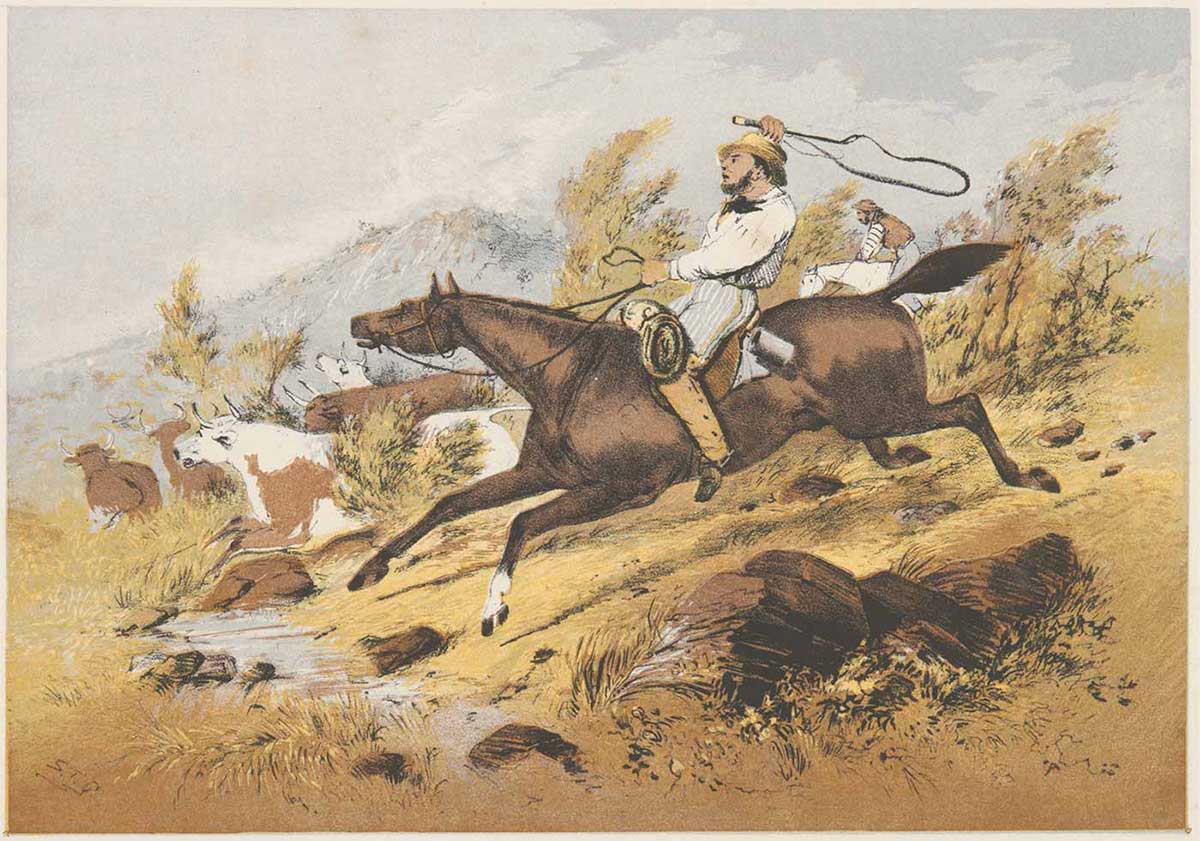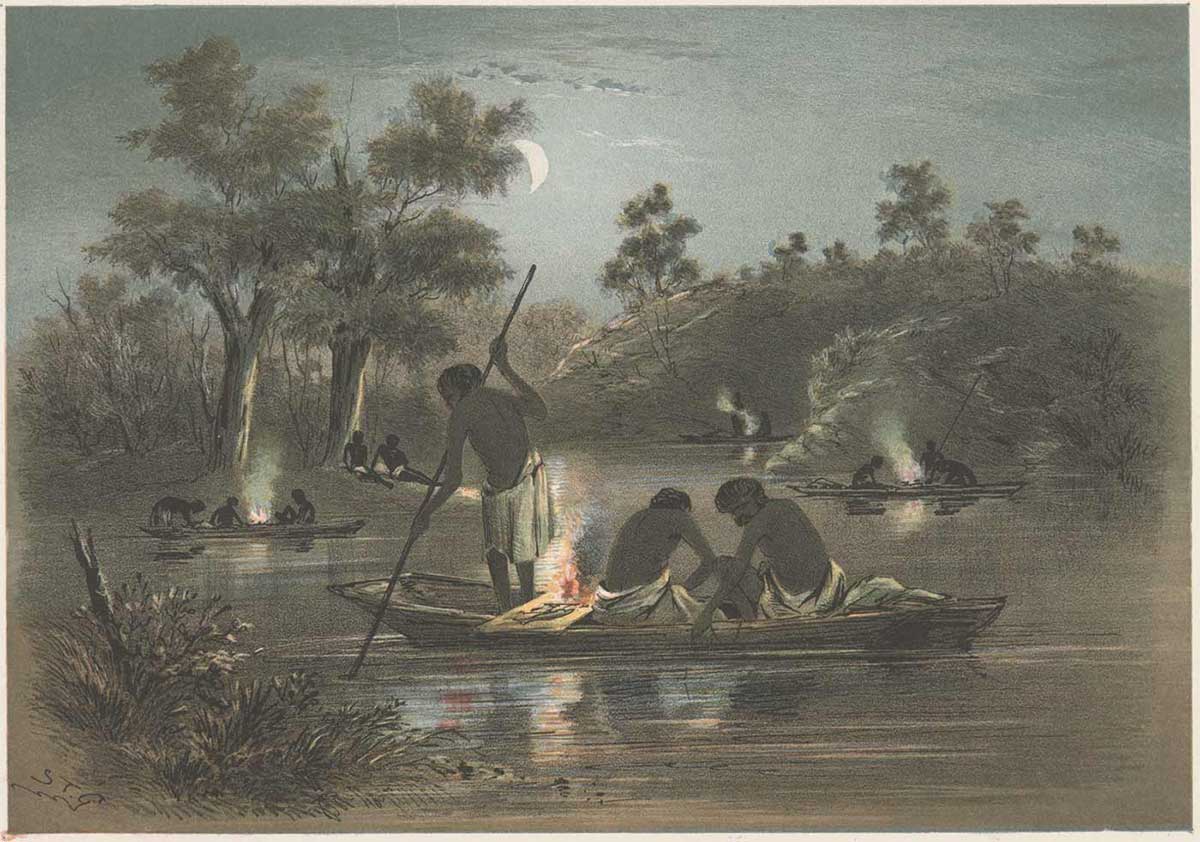The Australian Sketchbook is a collection of 24 works by artist Samuel Thomas Gill. The scenes include bushrangers, diggers heading for the goldfields, a bush funeral, kangaroo and emu hunting and a corroboree.
Published around 1865 by Melbourne printing and publishing firm Hamel and Ferguson, the book was extremely popular and ran to several editions.
The Australian Sketchbook was ST Gill’s first foray into the new process of chromolithography. It was the second book published in Australia using the technique, where multi-coloured images were printed using oil-based inks on a sequence of printing stones.
Samuel Thomas Gill
Samuel Thomas Gill (1818–1880) was a prolific artist and illustrator working in colonial Australia from the mid-19th century.
Gill arrived in South Australia from England in December 1839. Within 4 months he had established a studio in Adelaide offering 'to produce portraits of human beings, horses and dogs, and to sketch houses'. His artwork in South Australia includes drawings made on an exploring party to the Spencer Gulf and portraits of prominent South Australians.
In 1852 he went to the Victorian goldfields where he completed perhaps his best-known representations of everyday life on the diggings. He spent many years travelling in Victoria and New South Wales, sketching what he saw and producing lithographs intended to appeal to colonists and those in Britain with an interest in Australia.
He returned to Melbourne in 1864 and soon published The Australian Sketchbook. Alongside Gill's depictions of the digger life, horses and bushmen were a commonly represented in his work.
Historian WH Newnham observed that Gill's 'fame and fortune was to last just about as long as the gold-rush period'. He died penniless on 27 October 1880.
ST Gill collection
The Museum's collection of ST Gill works includes watercolours of the Victorian gold diggings and the earliest known depiction of the interior of a Sydney home. The Australian Sketchbook was acquired by the Museum in 2013. The Museum also holds a rare wooden printing block of ST Gill’s illustration Bourke Street West in the Forenoon.
In our collection
You may also like






